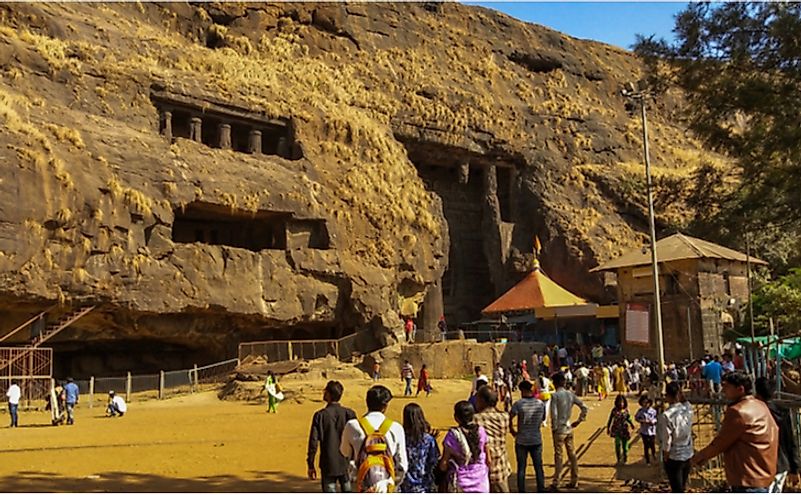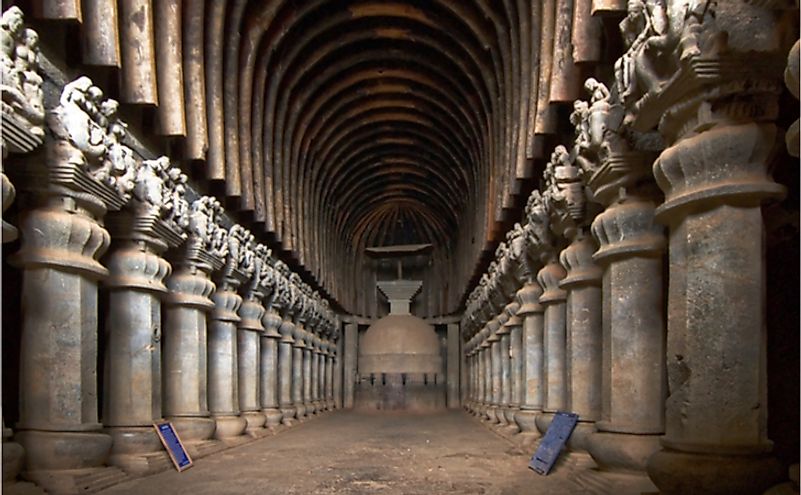Karla Caves: A Mesmerizing Archeological Destination In India

Karla caves, also known as Karla Cells or Karle Caves, are an ancient complex of Buddhist-Indian rock-cut caves that are situated at Karli, Maharashtra. The caves are located along the Mumbai-Pune highway, about 6.8miles from Lonavala. Some of the caves situated in the region include Nasik Caves, Bedse Caves, Patan-Buddhist Cave, and Bhaja Caves. Karla caves house an ancient Buddhist-monastery which dates back to the second century BC. These caves are historically associated with Hinduism and Mahasamghika sect. These cave shrines are the smallest of all the rock-cut Buddhist caves in Maharashtra, but they are the best known due to the popular ‘’Grand Chaitya’’.
History Of Karle Caves
Karla caves are the oldest Buddhist cave-shrines in India, which were developed between the second century BCE and the fifth century CE. The earliest cave shrine in the region dates back to 160 BCE, having arisen near one of the main ancient trading routes. Numerous Satavahana rulers and traders contributed to the construction of Karla caves. Since the Buddhists were associated with manufacturing and commerce through their previous association with traders, they moved their monasteries on the geographical sites near all of the major trading routes. The Buddhist provided lodging houses for the traders traveling through these routes. Currently, these caves are protected-monument under the Indian Archaeological Survey.

Architecture
These caves were built 37miles from Pune into the rocky hillside with numerous huge windows cut on the hill to light up the caves. Karla caves are made up of 16 caves, with the biggest one being Cave No. 8 (Great Chaitya). 3 of the caves shrines are Mahayanas caves while the others belong to the Hinayana Buddhism phase. The main cave is a vast prayer hall that is referred to as chaitya-griha, which dates back to the first century BC.
Great Chaitya Cave
Cave No. 8, also known as the Great Chaitya Cave, features a huge prayer or Chaitya hall, which dates back to 120 CE. Cave No. 8 houses the biggest rock-cut chaitya in the country, which is 46ft high and 148 ft long. The Chaitya hall has 37octagonal pillars. The most crucial feature of this cave’s facade is that it’s made using teak wood. The lateral ribs and the roof of the hall are made of wood. The timber used to design some of the caves have decayed. The cave has numerous beautiful sculptures of animals, men, and women. Cave No. 8 is the most prominent South Asian cave which was built and dedicated by Nahapana, the leader of Western Kshatrapas in 120CE.
Other Viharas And Chaityas
There are numerous viharas (the monk’s dwelling places) and carved chaityas. One of the unique features of these caves is their vaulted interiors and arched entrances. The names of the donors who contributed to its construction are inscribed on the pillars in the caves. There are numerous inscriptions by the private donors, including Yavana, who had contributed parts of the Cave No. 8. The private donors donated 6 pillars. One of the monk’s dwellings has inscriptions of Vasishthiputra Pulumavi, the ruler of Satavahana.







